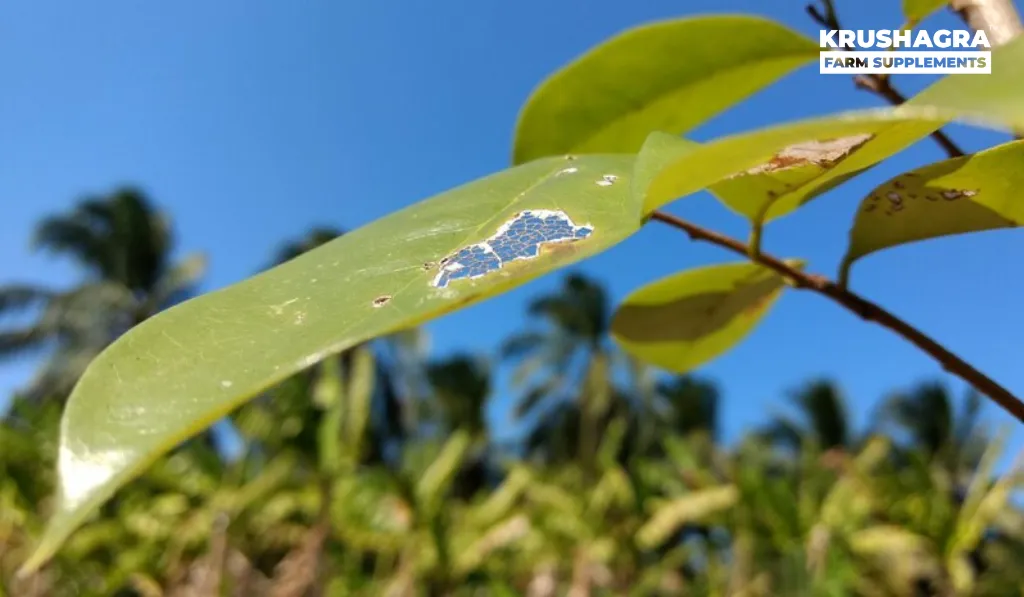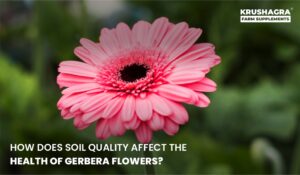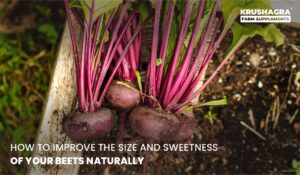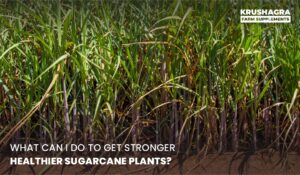Introduction
As summer temperatures rise, farmers face the challenge of managing crop diseases effectively. Biopesticides, derived from natural sources, offer a sustainable solution to combat these diseases while minimizing environmental impact.
Here’s a comprehensive guide on using biopesticides to tackle summer-induced diseases in various crops, along with recommended NPK (Nitrogen, Phosphorus, Potassium) proportions for optimal crop health:
1) Tomatoes
Disease:
Early Blight and Late Blight
Early Symptoms:
Dark spots on lower leaves, which gradually spread and cause wilting.
Detection:
Regularly inspect tomato plants for dark lesions on lower leaves and stems.
Biopesticide Application:
Apply Bacillus subtilis-based biofungicides preventatively when tomato plants reach the flowering stage. Spray the biopesticide solution evenly on both sides of the leaves, ensuring thorough coverage. Reapply every 7-10 days or after heavy rainfall to maintain disease control.
NPK Proportion:
Recommended NPK ratio for tomatoes is 4:6:8 (N:P:K) during the vegetative stage and 3:4:7 during the flowering and fruiting stages.
2) Cucumbers:
Disease:
Powdery Mildew
Early Symptoms:
White powdery spots on leaves, leading to leaf curling and yellowing.
Detection:
Monitor cucumber plants for white powdery patches on upper leaf surfaces.
Biopesticide Application:
Use Neem oil-based formulations as a foliar spray when cucumber plants begin to show signs of powdery mildew, such as white powdery spots on leaves. Apply the biopesticide solution early in the morning or late in the afternoon to avoid leaf burn. Repeat applications every 7-14 days or as needed until symptoms subside.
NPK Proportion:
Recommended NPK ratio for cucumbers is 3:1:2 (N:P:K) during the vegetative stage and 1:2:2 during flowering and fruiting.
3) Potatoes:
Disease:
Late Blight
Early Symptoms:
Dark lesions on leaf tips and stems, with white mold on leaf undersides in humid conditions.
Detection: Check potato foliage for dark spots and inspect undersides of leaves for white fungal growth.
Biopesticide Application:
Apply copper-based biofungicides preventatively on potato foliage when plants reach the flowering stage. Ensure thorough coverage of both upper and lower leaf surfaces, as well as stems and tubers. Reapply the biopesticide every 7-14 days or after heavy rainfall to protect against late blight infection.
NPK Proportion:
Recommended NPK ratio for potatoes is 5:10:10 (N:P:K) during the growth stage and 3:12:6 during tuber formation.
4) Corn:
Disease:
Corn Smut
Early Symptoms:
Swollen, distorted kernels and black fungal growth on ears.
Detection:
Examine corn ears for abnormal growths and black fungal spores.
Biopesticide Application:
Use Trichoderma-based biofungicides as a soil drench or seed treatment before planting corn seeds. Incorporate the biopesticide into the soil or coat seeds evenly before sowing. Reapply the biopesticide as a foliar spray once corn plants emerge, focusing on the basal parts of the stems where smut spores may enter.
NPK Proportion:
Recommended NPK ratio for corn is 4:2:2 (N:P:K) during the vegetative stage and 3:3:3 during the reproductive stage.
5) Soybeans:
Disease:
Soybean Rust
Early Symptoms:
Small, yellow-orange pustules on leaf undersides, leading to premature leaf drop.
Detection:
Look for rust-colored lesions on soybean leaves, especially on lower leaf surfaces.
Biopesticide Application:
Apply plant-derived essential oils, such as tea tree oil, as a foliar spray when soybean plants reach the vegetative growth stage. Dilute the essential oil in water and add a surfactant to improve adhesion. Spray the biopesticide solution evenly on soybean foliage, targeting the undersides of leaves where rust spores typically infect.
NPK Proportion:
Recommended NPK ratio for soybeans is 2:4:6 (N:P:K) during the vegetative stage and 1:2:3 during flowering and pod development.
6) Mango
Disease:
Anthracnos
Early Symptoms:
Leaf Lesions: Small, water-soaked lesions may appear on leaves, initially green and later turning dark brown or black.
Fruit Lesions: Infected fruits develop dark, sunken lesions, often surrounded by a pinkish or orange-colored halo.
Twig and Stem Lesions: Anthracnose can also cause lesions on twigs and stems, which may girdle and kill affected parts.
Detection:
Visual Inspection: Regularly inspect mango trees for signs of leaf, fruit, twig, and stem lesions, especially during periods of warm, humid weather.
Fruit Inspection: Examine developing mango fruits for characteristic dark lesions and sunken spots, which may indicate anthracnose infection.
Touch Test: Infected fruit lesions may feel soft and sunken upon gentle pressure.
NPK Proportion:
Recommended NPK ratio for mango is 6:3:9 (N:P:K) during vegetative stage; 4:3:6 during flowering and fruiting.
Biopesticide Application:
Apply copper-based biofungicides preventatively on mango foliage during flowering and fruit development stages. Ensure thorough coverage of all plant parts susceptible to anthracnose infection.
7) Watermelon:
Disease:
Fusarium Wilt
Early Symptoms:
Stunted Growth: Infected plants may exhibit slower growth compared to healthy plants of the same age.
Yellowing Leaves: Leaves may gradually turn yellow, starting from the lower leaves and progressing upwards.
Wilted Foliage: Leaves may appear wilted, even during periods of adequate soil moisture.
Brown Vascular Tissue: Upon cutting the stem longitudinally, brown discoloration may be visible in the vascular tissue.
Detection:
Visual Inspection: Regularly inspect watermelon plants for symptoms of stunted growth, yellowing leaves, and wilting foliage.
Stem Dissection: Cut a portion of the stem longitudinally and examine the vascular tissue for brown discoloration, which indicates Fusarium wilt infection.
Soil Testing: Conduct soil tests to identify the presence of Fusarium wilt pathogens in the soil, especially in areas with a history of the disease.
Symptom Progression: Monitor the progression of symptoms over time, as Fusarium wilt can quickly spread within a field or greenhouse.
NPK Proportion:
Recommended NPK ratio for watermelon is 6:1:4 (N:P:K) during vegetative stage; 4:1:5 during flowering and fruiting.
Biopesticide Application:
Use Trichoderma-based biofungicides as a soil drench or seed treatment before planting watermelon seeds. Apply the biopesticide solution directly to the soil around the base of seedlings to suppress Fusarium wilt pathogens.
8) Marigold
Disease:
Botrytis Blight
Early Symptoms:
Gray Mold on Flowers: Infected marigold flowers may develop a fuzzy, grayish mold on the petals, resembling a layer of ash.
Leaf Lesions: Small, water-soaked lesions may appear on marigold leaves, which later turn brown and become covered in grayish mold.
Stem Lesions: Botrytis blight can cause lesions on marigold stems, leading to soft rot and wilting of affected plant parts.
Fruit Rot: In cases where marigold plants produce seed heads, Botrytis blight may cause rotting of the seeds and surrounding tissues.
Detection:
Visual Inspection: Regularly inspect marigold plants for signs of gray mold on flowers, lesions on leaves and stems, and rotting of fruits.
Touch Test: Infected flowers and plant parts may feel soft and mushy upon gentle pressure, indicating fungal decay.
Observation of Environmental Conditions: Botrytis blight thrives in cool, humid environments, so monitor weather conditions and cultural practices that promote fungal growth, such as overhead irrigation and overcrowding of plants.
NPK Proportion:
Recommended NPK ratio for marigold is 10:5:10 (N:P:K) during vegetative stage; 5:10:10 during flowering.
Biopesticide Application:
Spray Bacillus subtilis-based biofungicides preventatively on marigold foliage during periods of high humidity to control Botrytis blight. Ensure thorough coverage of flowers and leaves.
Conclusion
By following these biopesticide application guidelines tailored to specific crop diseases and incorporating the recommended NPK proportions, farmers can effectively manage summer-induced diseases while promoting sustainable agriculture practices and safeguarding crop health.






